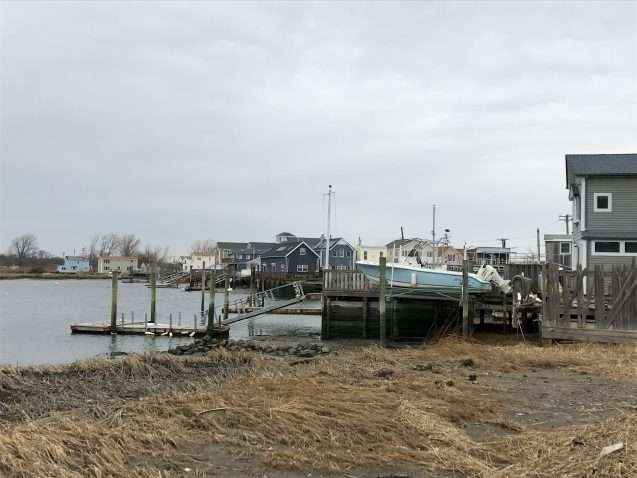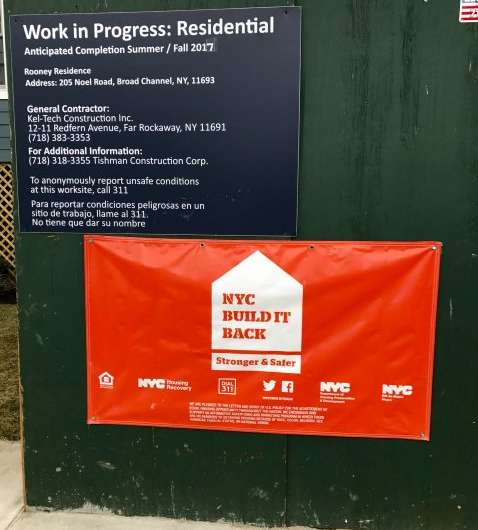Women may bear the brunt of climate change's impacts

In the weeks following Hurricane Sandy, I traveled from the Upper East Side of Manhattan to Staten Island to help community members rebuild their devastated neighborhoods. Perhaps the most poignant experience I had was helping to clean out the flooded basement of a single woman in Staten Island, named Rebecca. As volunteers, we sifted through the wreckage of personal effects in Rebecca's basement making decisions, as strangers, as to what photographs, clothing items, and medical records were salvageable and which items were not. While Rebecca was gracious and very thankful for our help, her sense of loss was palpable. More than anything, I wanted to give her an assuring hug and let her know that all would soon be well again. The flooding would subside, and life would go back to normal. Yet, I couldn't help but question whether this flooding, this damage, this loss of place, was going to be the new normal for Rebecca, her community, and similar at-risk neighborhoods throughout New York City.
Cities are becoming increasingly vulnerable to the risks of climate change. More than 90 percent of all urban areas are coastal, putting them at greater risk of flooding due to rising sea levels and storm surges. In New York City, it is predicted that sea level could rise by as much as six feet by the end of this century. In the face of such troubling statistics, it is encouraging that cities such as New York are rising to the occasion as innovative leaders in climate change mitigation and adaptation. However, urban policymakers should understand that the effects of climate change aren't equitable from a gender perspective and that women are likely to be disproportionately impacted by climate change compared to their male counterparts.
While I didn't recognize it at the time, Rebecca's experience in the aftermath of Hurricane Sandy as a female was likely disadvantaged in comparison to that of her male neighbors. Women are generally more vulnerable to the effects of climate change than men. As the majority of the world's poor, women's and girls' abilities to adapt well to climate change are significantly constrained by their being economically disadvantaged. Further, women and girls are often those primarily responsible for household work and obtaining food, tasks that sometimes involve access to scarce resources that climate change makes even scarcer. Perhaps most importantly, women and girls face social and political barriers that hinder their chances to participate in influencing climate change policies.
While the effects of climate change on women have been studied and are better understood from a rural or developing country perspective, its effects on women aren't as well-defined in an urban context. In New York City, approximately one in four women are considered economically disadvantaged, according to a report produced by the New York Women's Foundation. Within this contingent, Black and Latino women and girls are 25 percent more likely than White women and girls to live in poverty. Further, almost 40 percent of households with children headed by single mothers are impoverished in the city, compared to just 13 percent of dual-parent households. In addition to being economically vulnerable, women are typically primary caregivers to children, the disabled, and elderly. Throughout the City, there are 300,000 households where females are the primary caregivers to more than 1 million children.
A complex conversation related to climate change is that of voluntary or forced migration. An average of 22.5 million people have been displaced by climate- or weather-related events since 2008, translating to an estimated one person being displaced each second. Climate change has led to a scarcity of natural resources as well as sea level rise in many geographical locations, forcing populations to relocate. Further, crops and livestock are becoming increasingly at risk due to climate change, worsening food security concerns.
It's not only rural or developing nations, however, that are grappling with the concept of leaving their homes due to climate change. In 2016, the Federal government allocated $48 million to relocate America's first climate refugees from the Isle de Jean Charles in southeastern Louisiana. In New York City, federal, state, and city residential buyout programs were crafted in the aftermath of Hurricane Sandy for community members living in high-risk neighborhoods.
Forced migration is not often thought of in gender-specific terms. There are, however, notable differences in how various forms of forced migration effect males and females. For example, a study published in the journal Social Science & Medicine found that African American mothers forced to relocate after Hurricane Katrina suffered greater psychological distress than any other group. Thus, it's important to evaluate the concept of forced migration through a gender lens.

One of the earliest references to climate change policy in New York City is within PlaNYC, which was originally published by Mayor Michael Bloomberg's administration in 2007. Within the inaugural plan, preparation for climate change was addressed. In 2013, following Hurricane Sandy, the report was updated to provide actionable recommendations for rebuilding communities impacted by Hurricane Sandy and increasing resiliency and infrastructure citywide.
Following the change of administration from Mayor Bloomberg to Mayor Bill de Blasio, PlaNYC was updated and repackaged into OneNYC. Whereas PlaNYC incorporated climate change resiliency and its effects on New York City as an overarching theme, OneNYC includes it as one of four lenses: growth, equity, resiliency, and sustainability.
A commonality across both PlaNYC and OneNYC is that women are not specifically mentioned in relation to resiliency planning efforts. Rather, in both plans, women are explicitly mentioned from an economic perspective, in that both PlaNYC and OneNYC emphasize the promotion of Minority and Women Owned Business Enterprises.
The reports do, however, mention the existence of vulnerable populations as related to climate change and resiliency planning. PlaNYC includes in its definition of vulnerable populations the elderly and disabled, while OneNYC expands this definition to also include the homeless and children. Notably, women and girls aren't expressly mentioned in either of these definitions.
To respond to climate change and achieve the sustainability goals outlined in PlaNYC, the city convened the first New York City Panel on Climate Change (NPCC1) in 2008. Following Hurricane Sandy, the second New York City Panel on Climate Change (NPCC2) was convened in January 2013 to specify updated scientific information on climate risks and assist with rebuilding and resiliency efforts. The NPCC2's report, published in 2015, detailed the need to address "vulnerable groups" when considering resiliency, which did include women, along with the elderly and very young, those with preexisting physical, mental, or substance-abuse disorders, residents of low-income households, members of disadvantaged racial/ethnic groups, workers engaged in recovery efforts, and those with weak social networks.
The City has also developed more detailed plans for localized initiatives. In 2013, the New York City Department of City Planning launched the Resilient Neighborhoods initiative with the goal of identifying neighborhood-specific strategies, including zoning and land-use changes, to ensure community resilience in floodplain areas. One of the neighborhoods identified for the initiative was Broad Channel in Queens. As part of the study, a Community Advisory Committee was selected to provide input on the planning process. Overwhelmingly, the majority of Committee members are men. In fact, three out of 16, or less than 20 percent of the individuals serving on the Community Advisory Committee are female.
To better incorporate gender in policy-making processes, the city can ensure that women are included in the definition of "vulnerable populations" in future city reports, as related to resiliency. Additionally, research should be conducted to determine how women, in particular, are impacted by climate change in urban contexts and how they might be disproportionately impacted by forced temporary or permanent relocation from their homes.
While the decisions both policymakers and community members must make regarding climate change policies are numerous and complex, an emphasis should be placed on including women in policy- and decision-making. Without heightened attention to such inclusion, when the next climate-related disaster hits, women such as Rebecca from Staten Island or community members in Broad Channel, Queens, may find themselves without access to the resources they most need, such as health and childcare facilities, transportation, safe and welcoming public spaces, and necessary businesses such as grocery stores.
Journal information: Social Science & Medicine
Provided by State of the Planet
This story is republished courtesy of State of the Planet (blogs.ei.columbia.edu/)
















